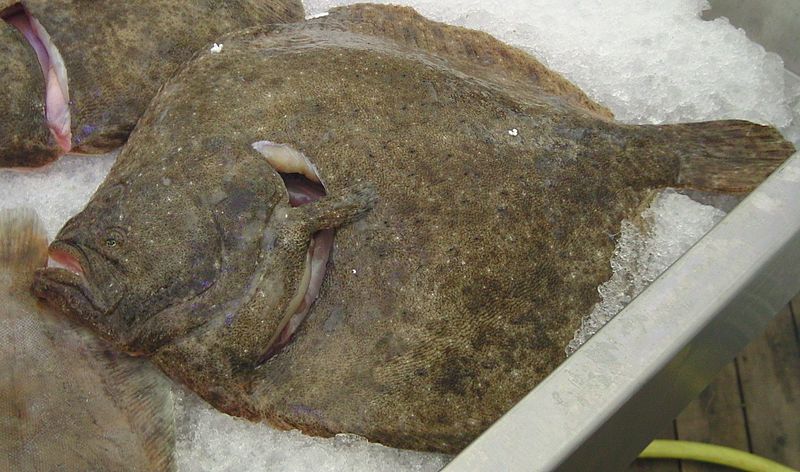Scophthalmus maximus, the turbot
 Pleuronectiformes are an order of bone fishes that famous mostly for their deformed anatomy and the metamorphosis that twists their body during their development. The species in this clade are well adapted to benthic environments, where their flat bodies and brownish bodies give them ninja-like camouflage abilities when they remain immobile in the bottom of the sea. But unlike many other fishes that have similar habits, such as rays or angler fishes, the bodies of pleuronectiformes are compressed bilateral axis instead of dorsoventral axis. The fish has one side of its body with a pale coloration, and the other side with the mimicry pigmentation, and rests its body on the pale side. This should imply that the eyes in the resting side of the body are useless. However, these fishes suffer a fascinating transformation during their larval stages in which one the eyes literally moves from one side of the head to the other. This group of animals are the only vertebrates to break their basic bilateral symmetry, thanks to this amazing developmental anomaly. Beyond their weird childhoods, these fishes are highly appreciated as food all over the world, with some species, such as Scophthalmus maximus, being extensively farmed in piscifactories.
Pleuronectiformes are an order of bone fishes that famous mostly for their deformed anatomy and the metamorphosis that twists their body during their development. The species in this clade are well adapted to benthic environments, where their flat bodies and brownish bodies give them ninja-like camouflage abilities when they remain immobile in the bottom of the sea. But unlike many other fishes that have similar habits, such as rays or angler fishes, the bodies of pleuronectiformes are compressed bilateral axis instead of dorsoventral axis. The fish has one side of its body with a pale coloration, and the other side with the mimicry pigmentation, and rests its body on the pale side. This should imply that the eyes in the resting side of the body are useless. However, these fishes suffer a fascinating transformation during their larval stages in which one the eyes literally moves from one side of the head to the other. This group of animals are the only vertebrates to break their basic bilateral symmetry, thanks to this amazing developmental anomaly. Beyond their weird childhoods, these fishes are highly appreciated as food all over the world, with some species, such as Scophthalmus maximus, being extensively farmed in piscifactories.
The genome of Scophthalmus maximus is one of the most compact vertebrate genomes known, with just 544Mbp and 22751 genes, and a high degree of synteny with other bone fishes. Their benthic adaptations are reflected in gene expansions for genes related to visual system and lipid production, putatively enabling them to better see and dwell in deep cold waters. Finally, the identification of immunity genes is of great interest for breeders, as pathogens and parasites produce important economic losses in aquaculture. Scophthalmus maximus now joins phylomeDB as our phylome number 18. You can find more information about the genome of this fish in the associated publication: http://dnaresearch.oxfordjournals.org/content/early/2016/03/06/dnares.dsw007.full
